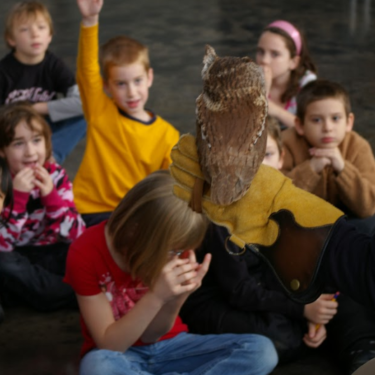I have found there is an art to crafting new VTS experiences when working outside visual art as our subject. I have been thinking about this ever since I first raised my hand and asked the VTS trainers, “so will VTS work with a live animal? How about with a skull? Or a fish exhibit?” After returning from my first VTS practicum in the winter of 2008, I came home enthusiastic and ready to jump in, having no idea where my own thinking and experiences would lead. I was new to VTS and excited to learn about the complex inner workings of what it means to be a reflective VTS facilitator who can create authentic, enriching experiences for my students.
I learned VTS in the traditional way, using the VTS curriculum of art images, alongside local elementary teachers. After a few months of these discussions in the classroom, we brought the students to our natural history museum, The Wild Center, and began to play with our science collection through facilitated VTS conversations. Staying true to what I had learned, I started contemplating the three VTS questions:
(Q1) What’s going on in this picture?
(Q2) What do you see that makes you say that?
(Q3) What more can we find?
The online VTS toolkit mentions that when facilitating a VTS session, “Fidelity to these questions and the wording is critical to developing the habits of mind necessary for independent critical thinking, and skilled communication.” But the question occurred to me: how should I name the object or animal and begin the rich VTS dialogue, when my “picture” was not a picture? I wanted to support student thinking and maintain the integrity of the VTS questions and method, without misrepresenting my chosen object.
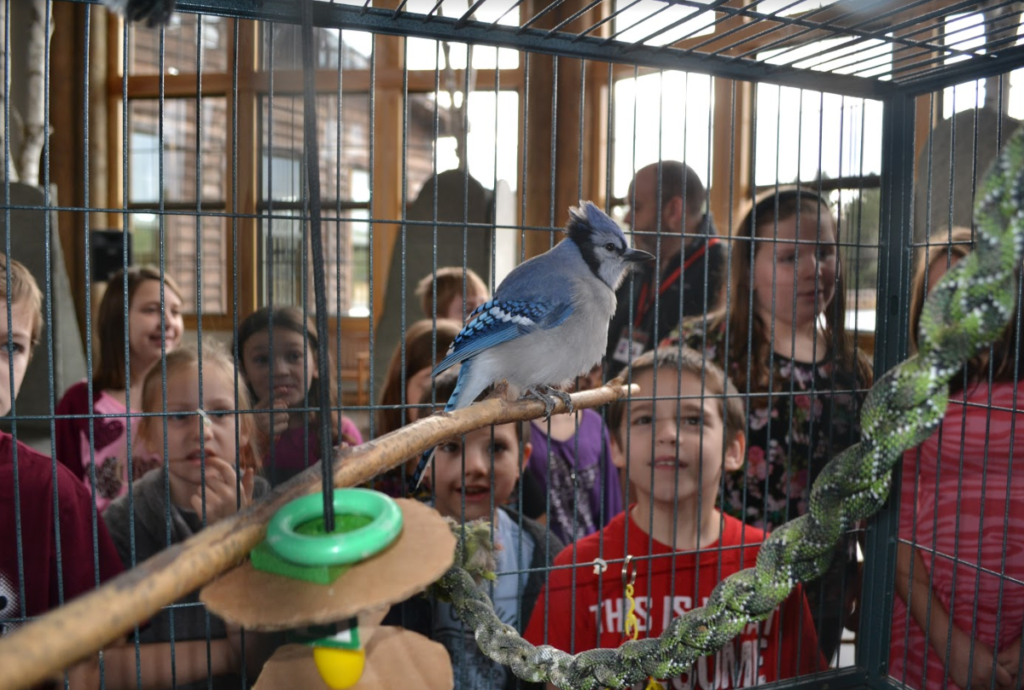
What’s going on with this animal?
The first step for a VTS discussion is to select the “image.” We chose natural history objects from The Wild Center’s collection, including items such as a beaver skull and log chewed by a beaver; a taxidermied coyote; as well as a variety of living animals, including a porcupine, a raven, and a variety of turtles. The goal of these pilot discussions was to offer a space for open-ended looking and thinking while providing a close-up encounter with the science experience using VTS as the tool.
After selecting what to show the group, we needed to decide how to introduce the group to the experience. The discussions began with the opening requests we make of our group, including how we introduce the activity: “Take a minute and look at this _____,” followed by the first question, “What’s going on in this _____?” As the VTS website states, the role of the first question is to “open the conversation… ask it only once. The phrasing suggests the image is about something. It encourages storytelling and the opportunity for participants to think and speak for themselves.” In reflecting on this, my first choice was, “What’s going on with this animal?” To me, this was the broadest term applicable and honored the intention of the first question.
It was a good start and I facilitated many conversations based on naming the object an “animal,” but I quickly learned that the broadest term does not necessarily lead to “developing the habits of mind necessary for independent critical thinking, and skilled communication.” Over the years, I have discovered that there is not a single replacement for the word “picture,” because each substitution is situationally driven and actually quite complicated. The following types of questions have helped me set a framework for opening the discussion:
- How might the prompt allow the viewer to build on their own thinking?
- What does the question ask the audience to do and can it scaffold their curiosity?
- Does the viewer still have the ability to derive their own meaning or does the question limit thinking by providing too much or too little information?
- Does the prompt allow the viewer to build on their thinking based on what they can see or observe?
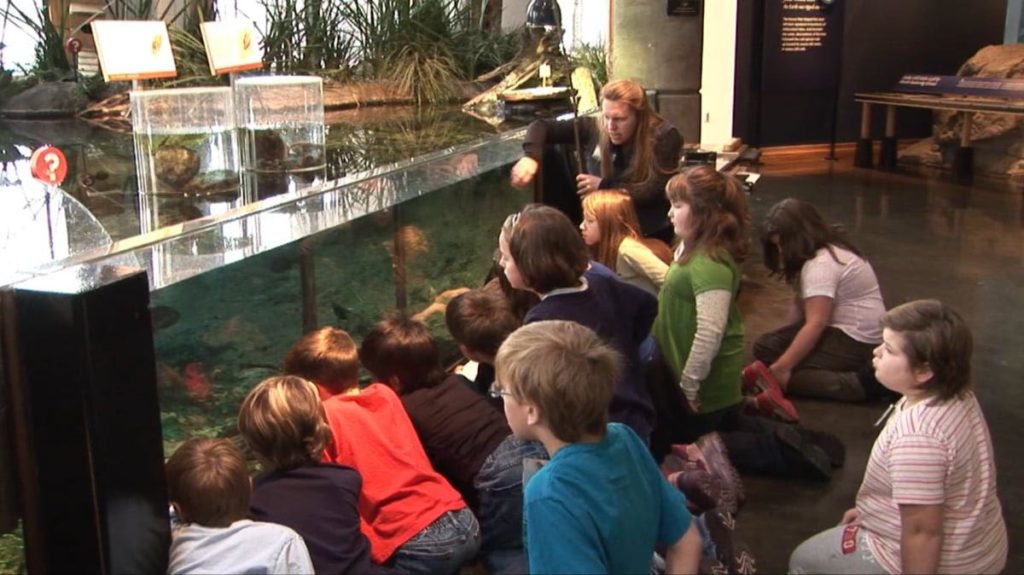 What’s going on in this habitat?
What’s going on in this habitat?
To understand the potential influence a label or name can have on a group, I have been reflecting on the human “need” to name what we see. Names or labels can help us categorize and organize our thoughts and ideas. They are an integral part of the systems we use to build our understanding and can help us feel secure as we puzzle through new experiences. When provided a name, I have the opportunity to approach my thinking from a common reference point which can lead to more categorization and potentially deeper connections. If the label is too vague, a person may enter a conversation with too deep a level of confusion and anxiety can grow out of that. Anxiety may be felt when we are asked to talk about something that is unfamiliar and, for some, the topic of science can amplify this feeling of insecurity. In science, there is a common misnomer that there is a correct answer or label when in reality, science and our understanding of the world are actually always in flux; however, not understanding something can be unsettling or cause dissonance. Puzzling through a challenging experience might allow us to grow, build new knowledge, and help us reframe our thinking, which is all supported through facilitated group discussion using VTS.
There are many agreed-upon categories that help humans classify natural history objects and animals. With both youth and adults I have learned to be flexible in naming the object and reflecting on how my choice can have an impact on the discussion. The taxonomy of animals is one of the classification systems I use to help pick a supportive name for what the group is asked to discuss. As a VTS facilitator, I have the job of thinking about the impact a word can have; hopefully, I can avoid leaving participants feeling like I am keeping secrets or playing a confusing game with the group. If it’s a turtle, and I know it’s a turtle, and you know it’s a turtle, then why not call it a turtle? Additionally, after choosing the image/text/objects for our session and how to introduce it, we also consider what vocabulary words we might have the opportunity to model. Just like VTS discussions with art objects, a well constructed paraphrase can provide an opportunity to hear new science vocabulary and help frame, highlight, or offer a new opportunity to build on their thinking. When I have made a strong choice, I can hear the group sharing what they are seeing and how it relates to their experiences and relying less on their ability to recall information.
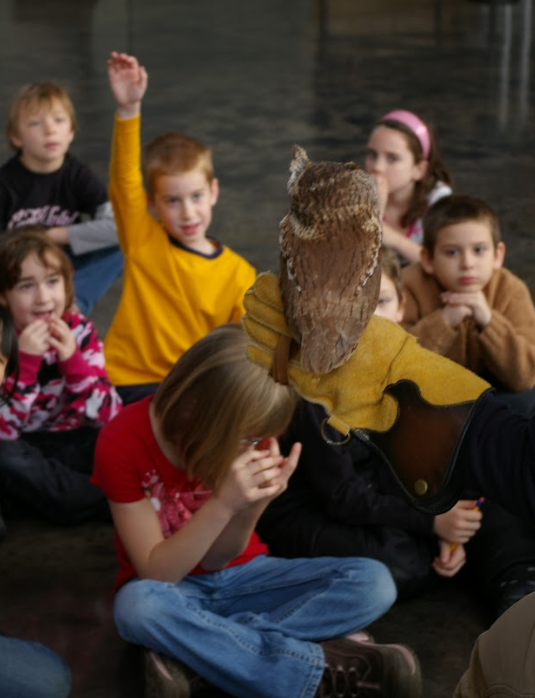
What’s going on with this owl?
Scientific classification
Kingdom: Animalia = Animal
Phylum:Chordata = Chordates
Class: Aves = Birds
Order: Strigiformes = Owls
Family: Strigidae = True Owls
Genus species (Scientific Name): Megascops asio = Eastern Screech Owl
There is a range of choices we have when crafting the first question for a science discussion. For example, if the object is an Eastern Screech Owl, some of the choices I might have include: “animal,” “bird,” “raptor,” “owl,” or “Eastern Screech Owl.” With school-age audiences, I typically choose the name “bird” or “owl” as my classifiers. My reasoning for “bird” versus “animal” is that most audiences have a preconceived classification of physical characteristics of a bird including: wings, feathers, and a beak, leaving little ambiguity for authentic discussion; however, with young students, naming the animal a “bird” instead of “owl” may provide me the opportunity to use the second question (Q2), “What do you see that makes you say it’s an owl?” This allows the students to provide their own thinking and evidence with the group and name the feature or behavior they observe. With an adult audience, however, when I have tried using the label “bird” verus “owl”, when looking at an owl, their comments indicate frustration and perhaps a perceived lack of respect for pushing them to verbalize what is already a “known” classification.
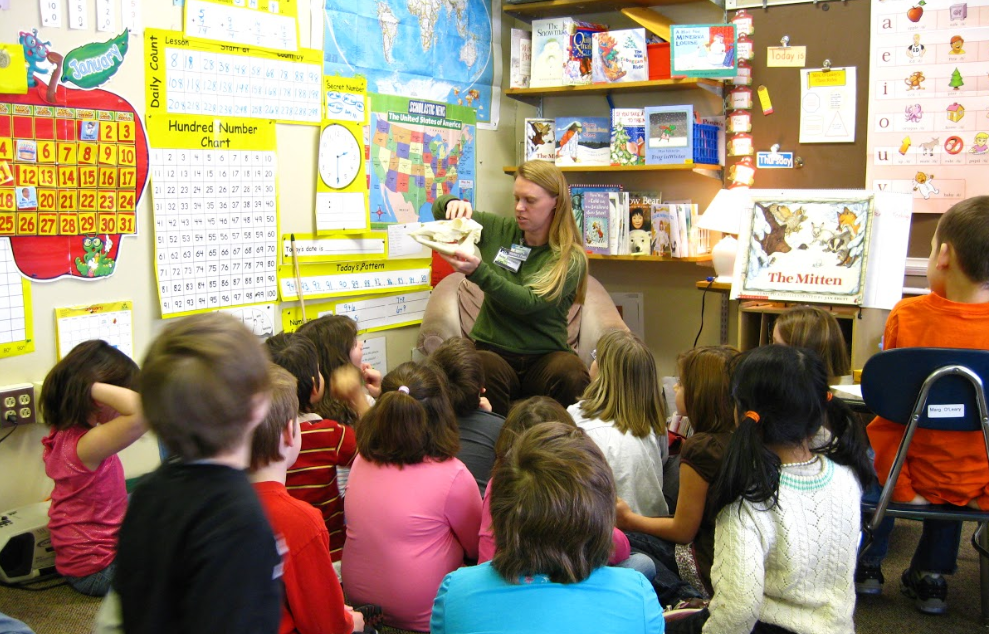
What’s going on with this skull?
In preparing for a VTS in science discussion, I also find the need to reflect on who is in the audience and how the opening question might provide a structure for meaning-making and a sense of security for that audience. The challenge is finding a balance between what might be learned through observation and what cannot be learned by looking. This is an important distinction when deciding on a label. Additionally, it is important to consider how naming, or providing too much context, might hinder someone from looking more deeply. We can make a supportive choice by striving to find a balance by providing just enough of a label to offer a framework as well as support an entry point for curiosity.
Reflecting on the demographics of your audience might be valuable in your initial choice. I have found adults tend to feel more secure when you use a specific name, as the label can allow them to feel relaxed enough to look at the animal in front of them without the perception that this is a guessing game with one right answer. With younger audiences, when I perceive an animal to have some natural ambiguity, I might try labeling it with a broader term rather than the specific species. I have observed that younger people, especially those with VTS experience, can sometimes let go of the need to first name the object and can enjoy the questioning, puzzling, and unfamiliarity of the situation. Additionally, we have found with natural science objects that sometimes opening with more specificity about what we are observing (i.e. asking the audience to focus on the behavior of the animals or to direct their looking toward comparing the animals) has proven supportive of the inquiry process. When doing so, this is an additional way the opening request and first question have been modified (i.e. “What’s going on with the behavior of this animal?” or “What’s going on when you compare these two owls?”).
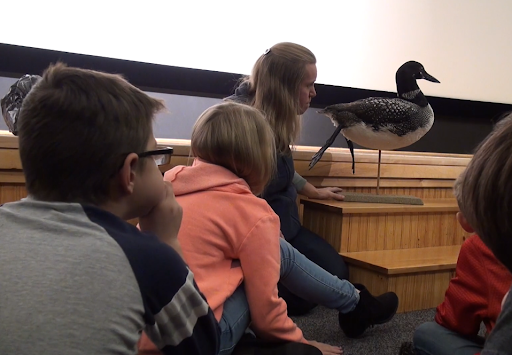
What’s going on with this Common Loon?
Even with young students, however, I have found occasions when being too vague has led the group into a shorter, more limited VTS discussion. For example, during one class we brought out a taxidermy of a loon, a relatively large, black and white bird found in northern North America that frequently dives for fish. One facilitator began the discussion with “What’s going on with this Common Loon?” and noted the students primarily mentioned physical details of the bird (colors, patterns, and size) and reflected on personal encounters. They verbalized what they could see and added inferences based on the object as well as memories of real life experiences. For this group the label of “Common Loon” seemed to give them a starting point. Another opened with “What’s going on with this bird?” and reflected that the group circled around the need to name the animal and hear confirmation of what it was they were observing. For this group, the use of the word “bird” in the opening question appeared to stagnate their thinking; they were looking for a place to grab and could not move past not knowing the name of the animal.
So, when in a VTS discussion a “picture” is not a picture, I do not believe there is a single, magical substitute for the word “picture” in the first question (Q1). As we explore new applications for VTS, it is important to be reflective facilitators and keep in mind that our goal is not to hide information; it is all about creating an enriching VTS experience where the learners can talk themselves into their own learning. It is my job to set them up for success while using VTS as a tool for science exploration. At The Wild Center, as we explore the natural history of the Adirondacks, I am on this journey along with the students, using VTS as a powerful discussion tool and framework to guide us. For more information about The Wild Center’s work focused on science content with VTS, please visit the VTS subscription pages: VTS in Science in Taking VTS Further.
Questions or comments? Contact us.

